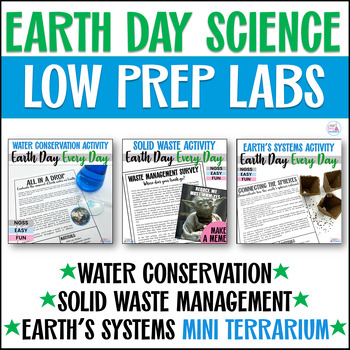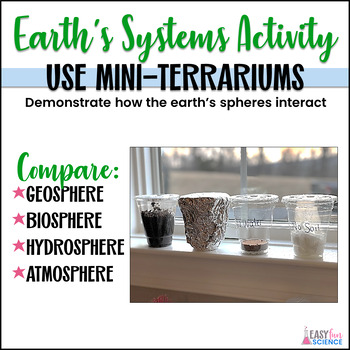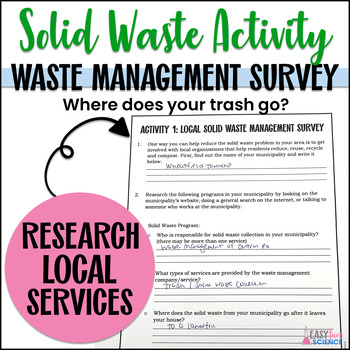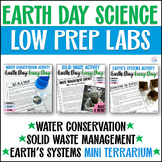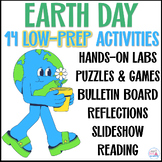Earth Day 2024 Activities 5th Grade to 8th Grade Easy Low-Prep Hands-on Science
- Zip
Products in this Bundle (3)
Also included in
- Celebrate Earth Day with this collection of LOW-PREP and FUN science activities for middle school students. This resource has everything you need for amazing Earth Day science labs unit! Earth Day Resources Included in this Resource:Solid Waste Management ActivityWater Conservation ActivityEarth'sPrice $10.48Original Price $11.65Save $1.17
- Celebrate Earth Day with this collection of LOW-PREP and FUN science activities for middle and high school students. This resource has everything you need for an amazing Earth Day unit... Earth Day Bulletin Board resources, reading comprehension, puzzles, games, hexagonal thinking activity, slideshoPrice $19.99Original Price $30.65Save $10.66
Description
Celebrate Earth Day with this collection of LOW-PREP and FUN science activities for middle school students. This resource has everything you need for amazing Earth Day science labs unit!
Earth Day Resources Included in this Resource:
Who is this resource for?
- Classroom Teachers
- Homeschool Parents
- Homeschool Co-op Teachers
- Christian School Teachers
- Enrichment Teachers
- Special Education Teachers
Here are the details of each included resource:
Water Conservation Activity
This water conservation activity is the perfect tool to teach students about the importance of conserving our most precious resource: water. This interactive and engaging lesson plan is designed to provide a fun and memorable learning experience for students, using just water as a model to demonstrate how water is distributed throughout the earth.
This resource includes an activity that involves measuring out specific amounts of blue-colored water to represent the amount of water in various reservoirs, such as the ocean, groundwater, lakes, swamps, and rivers. This hands-on activity helps students visualize and understand the vast amounts of water present in each of these reservoirs, and how each one plays a critical role in sustaining life on earth.
Earth's Spheres Activity
With this experiment, students will investigate how the four spheres of the Earth - the hydrosphere, lithosphere, atmosphere, and biosphere - interact with one another. Each experimental group will involve changing one sphere, while the other three remain constant. Students will observe how the plants grow in each terrarium over a period of several weeks and make comparisons to draw conclusions about the importance of each sphere.
Students will set up 4 mini terrariums, including a "normal" terrarium with soil, water and sunlight. This is the control group. The experimental groups include a terrarium without soil, a terrarium without water, and a terrarium without sunlight. Students will make observations and take measurements several times a week, and then use their data to compare how Earth's spheres are connected.
Solid Waste Activity
This resource includes three engaging activities that will take your students on a journey to become a more environmentally responsible citizen.
In the first activity, Students will embark on a research mission to identify local municipality programs that are dedicated to reducing waste through recycling, composting and waste reduction. This activity aims to build awareness and understanding of the programs available within your community that can help to promote a more sustainable lifestyle.
In the second activity, students will let get their creative juices flowing and produce a meme that inspires others to reduce, reuse, recycle and compost. This activity aims to encourage the development of creative thinking and communication skills to help promote positive environmental change.
In the third activity, students will conduct a personal trash audit to analyze the amount of waste you generate in a day. This activity aims to provide a clear picture of how much waste we generate and what we can do to reduce it.
By the end of these activities, students will be prepared for Earth Day with a deeper understanding of the importance of waste reduction, recycling and composting and the tools they need to make a positive impact on the environment.
These products support the following Next Generation Science Standards (NGSS):
- 5-ESS2-1
- 5-ESS2-2
- 5-ESS3-1
- 5-LS1-1
RELATED SCIENCE RESOURCES for Earth Day:
- Earth Day BINGO or Find Someone Who...
- Earth Day Two Truth and a Lie Game or Warm-Up
- Earth Day Bulletin Board Posters Famous Conservationists and Environmentalists
- Earth Day Famous Conservationists Slideshow
- Earth Day Reflection Hexagonal Thinking Activity
- Earth Day Bulletin Board Letters
- Earth Day Reading Comprehension, Puzzles and Reflection
- Ugly Sweater Endangered Animals Activity
- Solid Waste Management Activity
- Water Conservation Activity
- Earth's Spheres Activity
- Earth Day BIG BUNDLE of 14 Activities
- Earth Day GAME BUNDLE
- Earth Day NO PREP Activity Bundle
- Earth Day BULLETIN BOARD BUNDLE
Don't forget to FOLLOW ME - all new products are 50% off for the first 24 hours. You will get only notifications of new products by following me here.
Would you like FREE Science Resources? Head over to my website and sign up for my weekly newsletter, full of freebies, science tips and updates. EasyFunScience.com
Not finding what you are looking for? I am happy to take requests for the resources you are looking for. Simply go to the "Ask a Question" on my store page to contact me directly.
You can also find me on Instagram at Easy.Fun.Science

